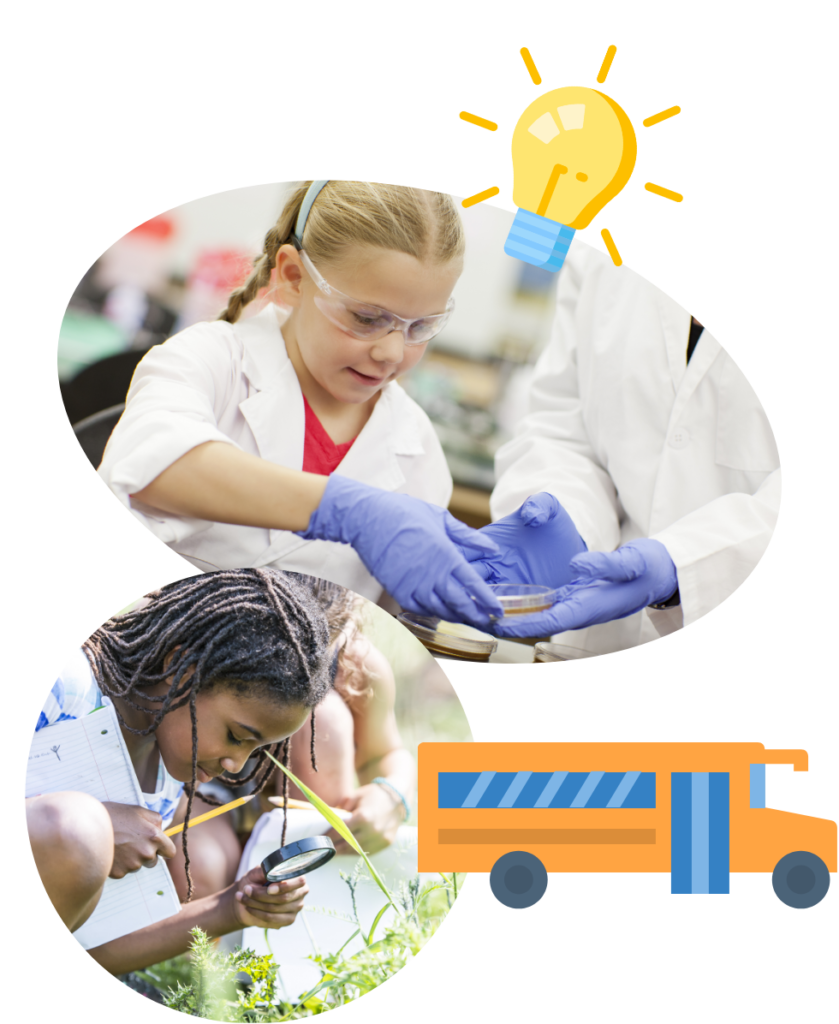The Canadian Association for Girls In Science (CAGIS) is Canada’s largest and longest-running STEM (science, technology, trades, engineering, and math) club for girls and gender-diverse youth aged 7-17. This award-winning club, founded in 1992, supports interest in STEM with virtual programming and local clubs that visit labs, workshops, and field sites to meet mentors and do fun, hands-on activities.

CAGIS takes an intersectional approach to its work to create a safe and inclusive space, and ensure that participants see themselves, and all of their intersecting identities, represented.
Women and gender diverse people face barriers in their STEM pathways, from lack of representation and role models, to bias, microaggressions, and inequitable treatment. Women and gender diverse people with intersecting identities such as race, sexuality, disability, and more, can face additional barriers.
CAGIS prioritizes equity, diversity, inclusion, and accessibility with an intersectional lens, at all levels of its work. This includes, but is not limited to: training of volunteers; encouraging attendees to share their pronouns, if comfortable doing so; showcasing female and gender diverse role models, including those with intersecting identities; waiving membership fees for families experiencing financial hardship, and more.
CAGIS is also on a journey of decolonization, reconciliation, and Indigenization. This includes work on Truth and Reconciliation Commission’s Calls to Action in addition to deepening learning and showcasing of Indigenous Knowledge with partners from Indigenous communities.

We are surrounded by STEM in our current knowledge-based society. Having literacy in STEM is becoming increasingly important, from decoding fact from fiction in the media to having the skills to be competitive on the job market.
Sometimes kids become turned off STEM as they get older because of pressures in school or stereotypes they encounter in society. Other kids love STEM but aren’t able to experience as much as they would like in their classrooms. These challenges can affect girls and gender-diverse youth more than boys (see Research).
CAGIS takes STEM out of the classroom and uses a multi-faceted approach that has been shown to develop girls’ interest in STEM.
CAGIS is fun! The hands-on activities associate fun with STEM, provide a sense of self efficacy, and lead to deep learning without even realizing it.
CAGIS provides role models of STEM students and experts, giving a more realistic and non-stereotyped picture of who STEM experts are and what they do.
CAGIS in-person events often occur at the workplaces of STEM experts giving girls and gender-diverse youth a “behind-the-scenes” view of STEM in action. Events occur in the lab, in a forest, in an operating room, and more, providing new experiences and a sense of belongingness in these spaces.
STEM is everywhere! CAGIS explores STEM topics like bridge building, robotics, microscopes, and more. But we also explore how STEM is everywhere with events like the chemistry of baking, the physics of figure skating, and more.

Close your eyes and picture a scientist. What do you see? The most common description among school children is an old White man with messy hair, glasses, and a lab coat.1 A recent meta-analysis that examined five decades of Draw-a-Scientist studies found that children have increasingly drawn female scientists over time. However, drawings of female scientists decrease as children get older. While children draw approximately equal numbers of male and female scientists at ages 5-6, by ages 14-15, teenagers draw male scientists four times more frequently than they draw female scientists.1
Children are inundated with stereotypical portrayals of scientists in the media and society including TV shows and children’s toys, which are becoming increasingly gender divided.2 Research has demonstrated that the media and children’s exposure to scientists plays a strong role in shaping their perceptions of scientists.1, 3, 4 These media portrayals of scientists can influence students’ interest in entering those fields.4
CAGIS uses a variety of elements that have been demonstrated by research to facilitate girls’ interest in STEM. For example, visits from female scientists, reading articles about women in Science, Technology, Trades, Engineering, and Mathematics (STEM), and teachers profiling women in STEM decrease stereotypic associations and improve attitudes toward women in science among female and male school children.5, 6 Providing children with non-stereotyped and diverse role models in the sciences can influence perceptions of scientists and interest in pursuing STEM fields. Additional research indicates that hands-on activities,7, 8, 9 project based science,7 cooperative learning,10 and mentoring programs that connect girls to scientists11 improve learning and attitudes towards STEM.
Thus, our approach is consistent with scientific findings on how to facilitate girls’ interest in STEM fields. To read more, please see Dr. Larissa Vingilis-Jaremko’s briefing to the Canadian House of Commons’ Standing Committee on the Status of Women and her article in Learning Landscapes.
Read our 2025 written submission to the House of Commons’ Standing Committee on Finance, “Pre-Budget Consultations in Advance of the 2025 Budget”
Read Dr. Vingilis-Jaremko’s briefing to the Canadian House of Commons’ Standing Committee on the Status of Women, “Economic Security of Women in Canada”
Read Dr. Vingilis-Jaremko’s article in LEARNing Landscapes, “How Science Clubs Can Support Girls’ Interest in Science”